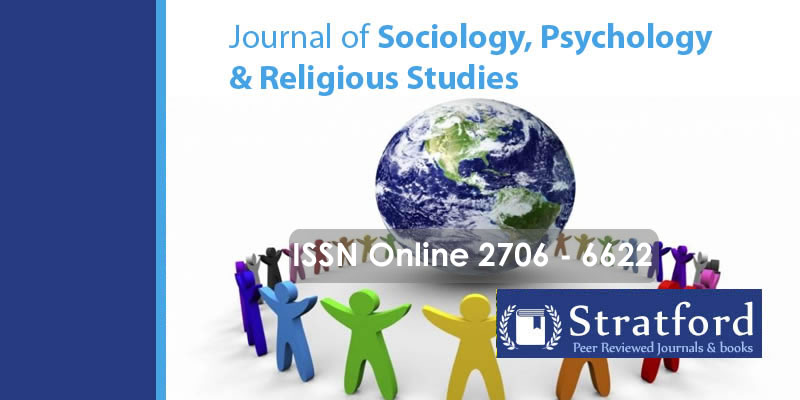The Physical Effects of Gigantomastia On the Mental Health of the Women in Nairobi County, Kenya
DOI:
https://doi.org/10.53819/81018102t2494Abstract
Gigantomastia, characterized by excessive breast tissue growth exceeding normal proportions, presents significant physical health challenges for affected women. This qualitative study examined the physical effects of gigantomastia on women's health in Nairobi County, Kenya, through in-depth interviews with 30 participants aged 19-50 years using snowball sampling technique. The study employed a descriptive research design grounded in phenomenological epistemology to explore the lived experiences of women with this rare condition. Data was collected using semi-structured interviews conducted virtually via Zoom platform and analyzed through thematic analysis. The findings revealed six primary physical manifestations: large and heavy breasts causing excessive bodily strain, chronic pain affecting the back, neck and shoulders, challenges in obtaining appropriate clothing and undergarments, difficulties performing physical activities and exercise, postural problems leading to spinal complications, and sleeping difficulties affecting rest and recovery. These physical effects created a cascade of health complications that significantly compromised participants' mobility, daily functioning, and overall quality of life. The study concludes that gigantomastia represents a substantial physical health burden requiring comprehensive healthcare interventions. Key recommendations include establishing specialized clinics, developing clinical guidelines for early detection and management, implementing public awareness campaigns, and including gigantomastia treatment in national health insurance schemes to ensure accessibility and affordability for affected women.
Keywords: Gigantomastia, Physical Effects, Women's Health, Nairobi County, Kenya
References
Agrawal, N., & Kriplani, A. (2002). Management of gigantomastia complicating pregnancy. A case report. Journal of Reproductive Medicine, 47, 871-874.
Akhtar, I. (2016). Research design. In Research in Social Science: Interdisciplinary Perspectives (pp. 68-84). Research Gate.
Benna, M., Naser, R., Fertani, Y., & Ayadi, M. (2018). Extreme Idiopathic gigantomastia. International Journal of Research in Medical Sciences, 6(5), 1808-1811. doi:10.18203/2320-6012.ijrms20181782
Chacha, G. (2018, May 15). Effects of big breasts: Your big 'tunyosh' can break your back. Retrieved from https://www.standardmedia.co.ke/entertainment/lifestyle/2000215007/effects-of-big-breasts-your-big-tunyosh-can-break-your-back
Chetty, V. (2016). The Safety of the Superomedial pedicle for Gigantomastia. Johannesburg: Master Thesis, University of Witwatersrand.
Fritscher, L. (2020, June 26). How Cognitive Theory Is Used in Phobia Treatment: Write a New Script for Your Anxiety Triggers. Retrieved from https://www.verywellmind.com/cognitive-theory-2671570
Helgeson, V. S., Reynolds, K., & Siminerio, L. (2014). Cognitive Adaptation Theory as a Predictor of Adjustment to Emerging Adulthood for Youth with and without Type 1 Diabetes. Journal of Psychosomatic Research, 77(6), 484-491. doi:10.1016/j.jpsychores.2014.09.013
Kim, J. H., Baek, S., Yoo, T., Lee, A., & Young, D. (2018). Relapsed Bilateral Gigantomastia Caused by Pseudoangiomatous Stromal Hyperplasia after Reduction Mammoplasty. Archives of Aesthetic Plastic Surgery, 24(2), 78-82. doi: https://doi.org/10.14730/aaps.2018.24.2.78
Kirchherr, J., & Charles, K. (2018). Enhancing the sample diversity of snowball samples: Recommendations from a research project on anti-dam movements in Southeast Asia. PLoS ONE, 13(8), 1-17. doi: https://doi.org/10.1371/journal.pone.0201710
Moschella, F., Cordova, A., & Toia, F. (2016). Gigantomastia. International Textbook of Aesthetic Surgery, 19, 239-245. doi:10.1007/978-3-662-46599-8_18
Mugenda, G. A., & Mugenda, M. O. (2003). Research Methods- Dictionary Applied Research and Training Services. Nairobi, Kenya: Acts Press.
Naderifar, M., Goli, H., & Ghaljaei, F. (2017). Snowball Sampling: A Purposeful Method of Sampling in Qualitative Research. Strides in Development of Medical Education, 14(3), 1-5. doi: http://dx.doi.org/10.5812/sdme.67670
Ratelle, C., Vallerand, R., Chantal, Y., & Provencher, P. (2004). Cognitive adaptation and mental health: A motivational analysis. European Journal of Social Psychology, 34, 459-476. doi:10.1002/ejsp.208
Ravichandran, D., & Naz, S. (2016). A study of children and women referred to a rapid diagnosis breast clinic. European Journal of Pediatric Surgery, 16, 303-306.
Saariniemi, K. (2011). The Effects of Reduction Mammaplasty. Finland: Academic Dissertation, University of Helsinki.
Taylor, S. E. (1983). Adjustment to threatening events: A theory of cognitive adaptation. American Psychologist, 38(11), 1161-1173. doi:10.1037/0003-066X.38.11.1161
Türkan, H., Gökgöz, Ş., Taşdelen, İ., & Dündar, H. Z. (2016). Gestational Gigantomastia. The Journal of Breast Health, 12(2), 86-87.
Vohra, H., Desai, H., & Shah, N. (2015). Unilateral gestational macromastia -- a rare disorder. Gujarat Medical Journal, 70(2), 60-61.
Yang, J.-H. (2015). An idiopathic gigantomastia. Annals of Surgical Treatment and Research, 88(3), 166-169.


